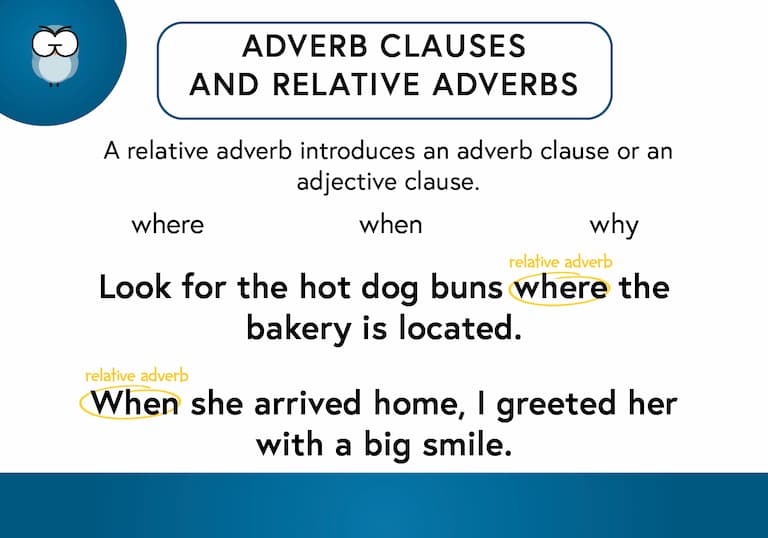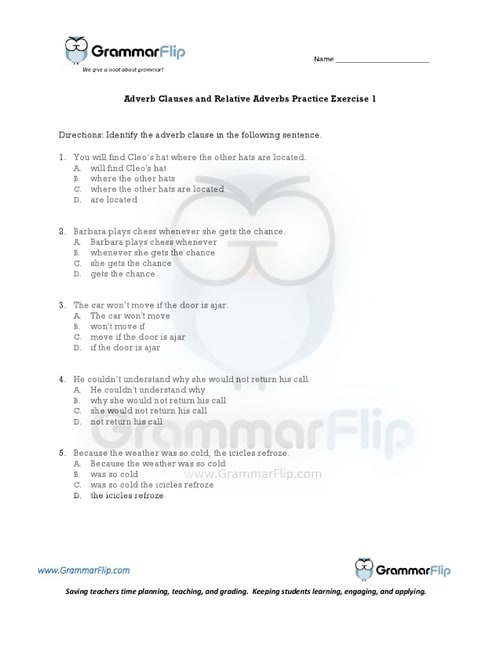What is a Relative Adeverb?
A relative adverb is a type of subordinating conjunction that introduces an adverb clause or an adjective clause. Some examples of relative adverbs are the following: where, when, why.
Some examples of relative adverbs (introducing adverb clauses) would be the following:
Look for the hot dog buns where the breads and pastries are located.
When she arrived home from the doctor, I greeted her with a big smile and a present.
With all his time spent studying, George couldn’t comprehend why he failed the exam.
Long-Form Videos: Relative Adverbs
Long-form instructional video lessons allow students to engage with grammar concepts in more depth and detail.
This format provides students with a stronger foundation and a more comprehensive understanding of relative adverbs.
Short-Form Videos: Relative Adverbs
Short-form videos are an excellent way to review grammar concepts. Our two-minute instructional videos help students review the concept of relative adverbs to further solidify their understanding.
Definition Cards: Relative Adverbs

Definition cards reinforce grammar concepts by providing clear and concise explanations that students can easily reference for quick review and better retention. GrammarFlip’s definintion cards help students review the concept of relative adverbs to further solidify their understanding.
Why You Should Use Relative Adverbs in Your Writing
Because relative adverbs are simply subordinating conjunctions that introduce dependent clauses to provide additional information, there are a handful of relative adverbs that can be used for specific purposes:
Why – provides a reason
When – provides a point in time
Where – provides a location
The reason we might use these relative adverbs in our writing is to connect ideas that are related and to provide more detail in our writing. Compare the following two sentences:
He found the treasure.
He found the treasure where the pirates had hidden it.
Notice how the second sentence with the relative adverb (and subsequent adverb clause) provides much more insight into the unique aspect of where he found the treasure (specifically, where the pirates had hidden it).
Finally, be sure not to confuse relative adverbs with relative pronouns which are slightly different.
Download a Free Worksheet on Relative Adverbs!
Click the image below to download your free worksheet on relative adverbs!

Need a grammar program that provides the instruction and grading for you?
Explore More GrammarFlip Lessons!
Parts of Speech lessons provide the building blocks of grammar. GrammarFlip covers these topics in detail to ensure a solid foundation is built. First time learners and students seeking to review the parts of speech can both benefit from the instructional videos and slide show reviews.
Parts of the Sentence lessons are critical for understanding how the parts of speech function in language construction. From the basic to the advanced, these lessons will cover a wide range of grammar topics that can be used in any grade level or classroom.
Mechanics and Usage lessons equip students with the necessary skills to communicate clearly to all audiences. With a focus on the application of these concepts in student writing, these lessons tie together both simple constructions of grammar as well as the more complex such that any age or skill level of student will benefit.


